The palace that once housed a museum, a zoo and a conservatory on its sprawling grounds is the one to visit if you don't want to jostle with the crowds.
Seoul is home to not one, not two, but five palaces. The first palace I visited in Seoul, South Korea is Changgyeonggung in winter 2013 because I could walk there from my hostel (it did take a while because I took one wrong turn too many). I will remember it for being the most peaceful. It's the palace to visit if you want shots that do not have people.
Built in 1483, Changgyeong (Flourishing Gladness) Palace was one of the "eastern palaces" along with Changdeok Palace because they sat east of Gyeongbok Palace. In the last years of the dynasty, the Japanese occupiers built a zoo, botanical garden and museum in the palace compound with a view to symbolically undermining the royal status of the dynasty. The palace was restored in 1984 with the removal of the structures added by the Japanese. Source
Changgyeonggung was first called Sugganggung. After ascending the throne in 1418, King Sejong built this palace for his father, former King Taejong, to live. In 1483, the palace was expanded and Myeongjoongyeon, Munjeongyoen, Tongmyeongyeon, and other buildings were built for Queen Jeonghui, queen of King Sejo. Queen Sohye, queen of Deokjong, and Queen Ansun, queen of King Yejong. At that time, the palace was renamed Changgyeonggung.All of the buildings were burned down during the Japanese Invasion in 1592, and the palace was rebuilt in 1616.In 1830, another great fire broke out and many of the palace's buildings were destroyed by the fire, and those were rebuilt in 1834. The main hall of Myeongjeongjeon, however, was undamaged, and the building that was rebuilt in 1616 is preserved today. It is the oldest main hall of a Joseon era royal palace, and has been designated National Treasure No. 236.In 1909, a public zoo and conservatory were built in Changyeonggung.In 1911, the Japanese empire built a museum in the palace, and the museum, zoo and conservatory were collectively called Changgyeongwon (Changgyeong Gardens, demoting Changgyeonggung from the status of palace.From December 1983 to August 1986, renovation work was carried out to return it to its original state as a royal palace. The name was changed back to Changgyeonggung, and the zoo and amusement park facilities within the palace were removed. Munjeongyeon, ---- and the auxiliary buildings around Myeongjeongjeon were rebuilt.
This marks where court officials should stand based on their ranks. The higher the rank the nearer to the king.
Then it started to snow. All museums are marked with this "totem".
On the outskirts of the palace, I make my way along the walls to my next destination, as the snow falls hard and fast.



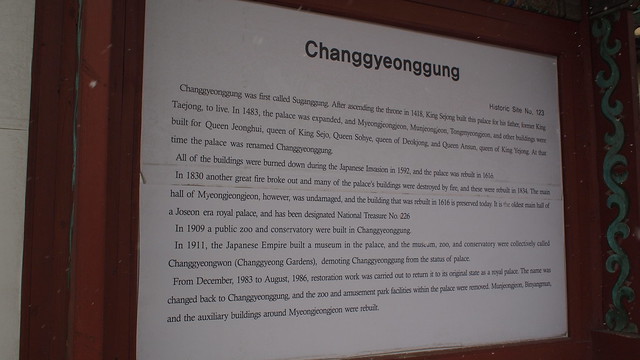
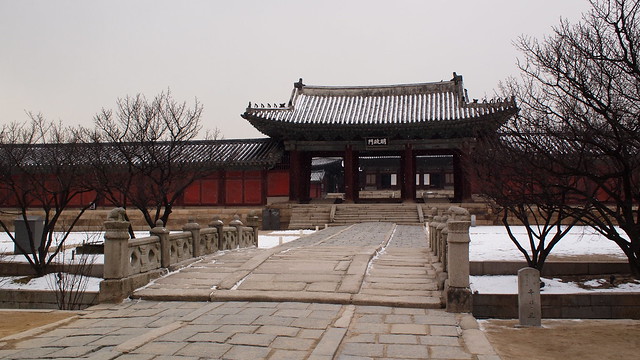
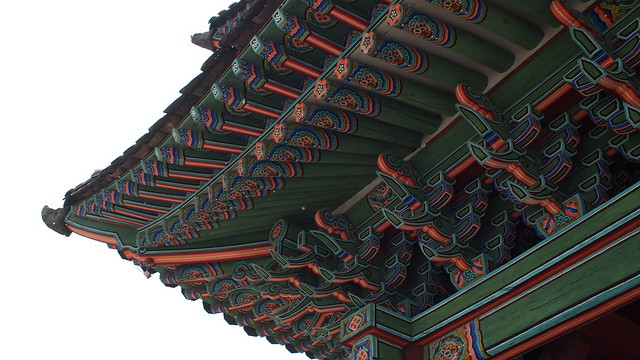
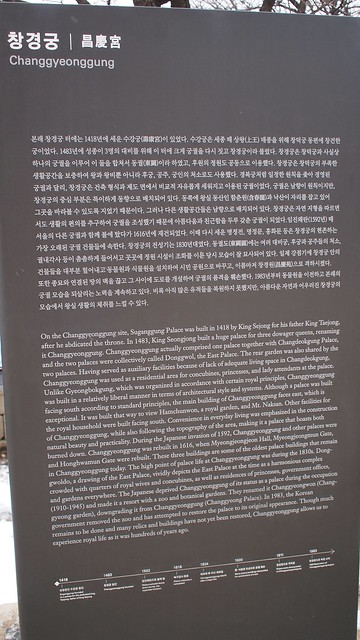
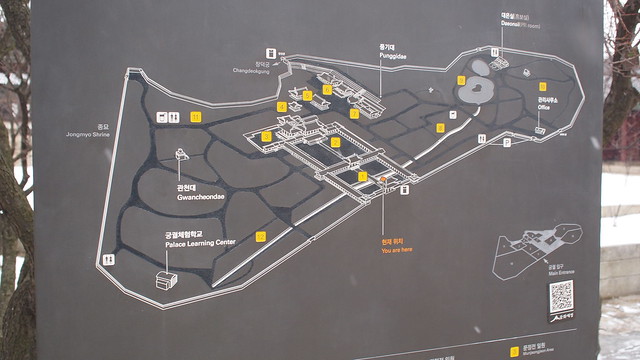


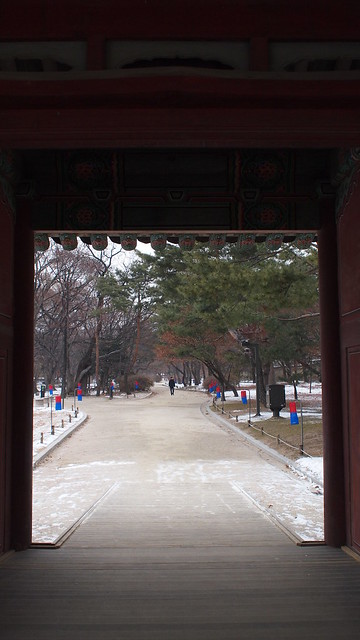


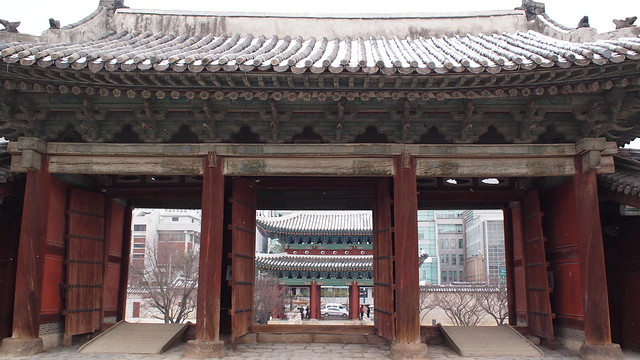
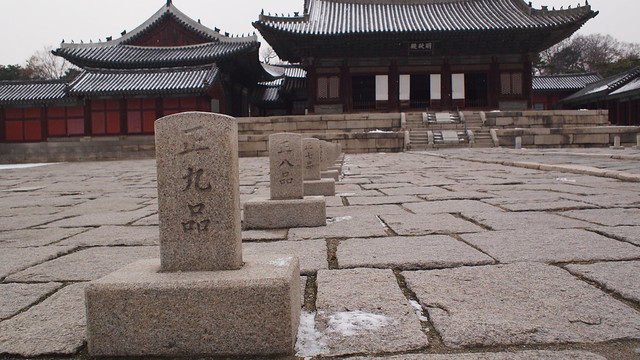
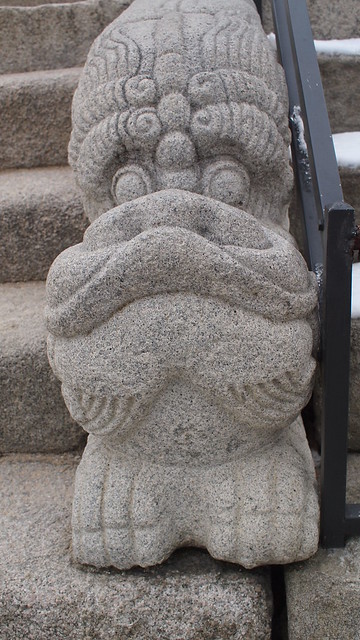
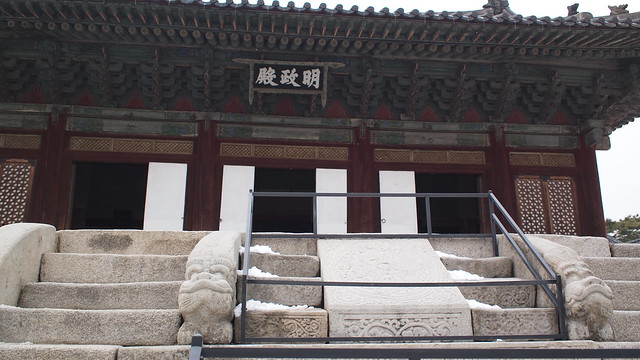

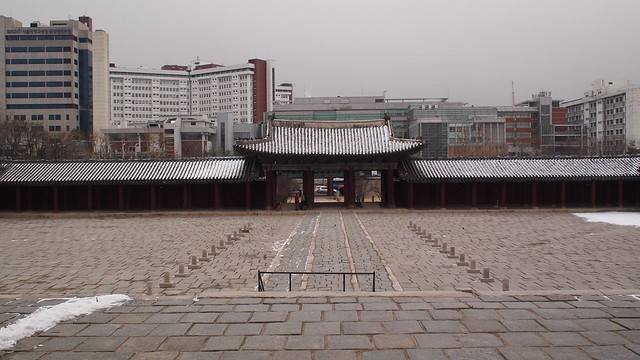

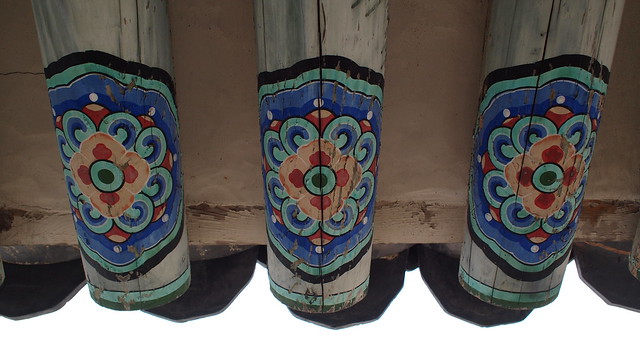



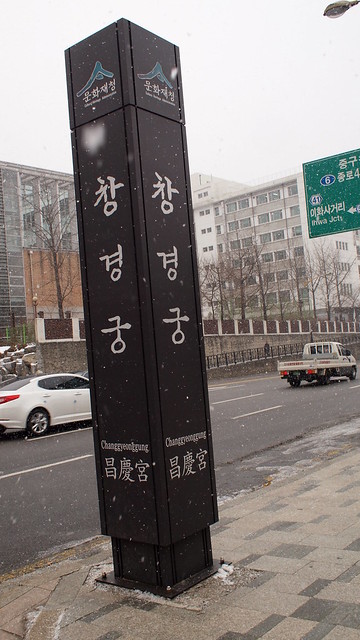


No comments:
Post a Comment